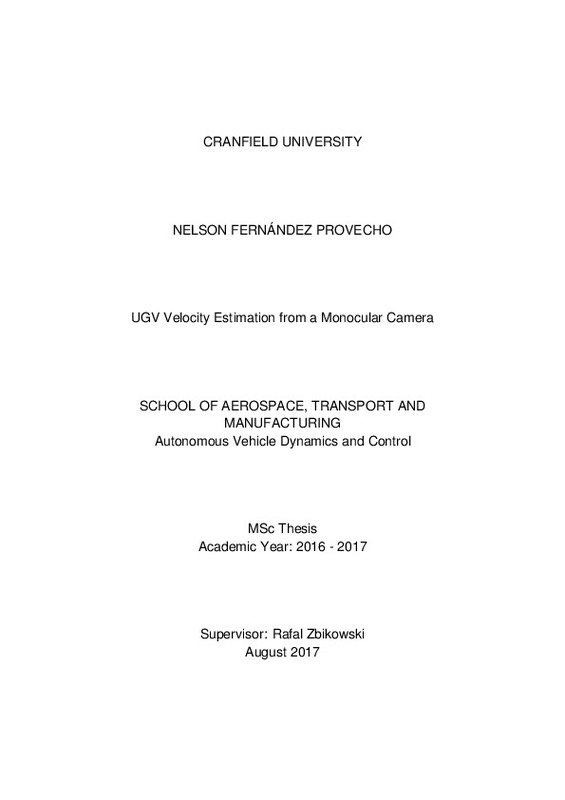|
Resumen:
|
[ES] El trabajo presentado en este TFM se centra en el uso de una cámara monocular orientada hacia adelante para estimar la velocidad de un vehículo terrestre y comprobar la precisión de las medidas. El método propuesto ...[+]
[ES] El trabajo presentado en este TFM se centra en el uso de una cámara monocular orientada hacia adelante para estimar la velocidad de un vehículo terrestre y comprobar la precisión de las medidas. El método propuesto procesa el vídeo grabado usando una técnica de "visual odometry" basada en correspondencias 2D-to-2D para obtener una estimación de la posición de la cámara en un fotograma en relación con el anterior usando información de puntos destacables de las dos imágenes. Sin embargo, el vector de translación obtenido es de longitud unitaria, por lo que se ha desarrollado un método para obtener su escala absoluta. Para ello se triangulan puntos de la carretera con dos imágenes consecutivas que permiten obtener un plano de la carretera virtual y medir la distancia de éste a la cámara. Sabiendo la altura real a la que está situada se obtiene un factor de escalado y, junto con el tiempo entre fotogramas, se calcula la velocidad. Los resultados directos del algoritmo tienen bastante ruido y algunos picos de velocidad que no son reales producidos por la presencia de otros vehículos. Esto se resuelve fijando un límite de aceleración máxima y aplicando un filtro de media móvil. La influencia de ese umbral ha sido estudiada y demostrado que es importante a la hora de analizar los resultados finales. Utilizando esta metodología se han conseguido buenas estimaciones, demostrando que es efectiva, dando resultados precisos, especialmente cuando las velocidades no son muy grandes y hay suficientes puntos en la carretera. Además, el método propuesto se ha analizado usando diferentes resoluciones, tanto temporales como espaciales, mostrando que el efecto que tienen sobre los resultados no es muy grande, aunque, en términos generales, los resultados son mejores con las resoluciones más altas.
[-]
[EN] The work presented in this thesis focuses on the use of a forward-looking monocular camera to estimate the velocity of a ground vehicle and check the accuracy of its measurements. The proposed method processes the ...[+]
[EN] The work presented in this thesis focuses on the use of a forward-looking monocular camera to estimate the velocity of a ground vehicle and check the accuracy of its measurements. The proposed method processes the recorded video with a 2D-to-2D-based visual odometry approach to obtain an estimation of the camera pose of one frame with respect to the previous one using the information of salient corners on both images. However, the translation vector of this estimation is of unit length so a method to obtain the absolute scale has been also developed. Points on the road from two consecutive images are triangulated to obtain a virtual road plane to then measure the distance from it to the virtual camera. With the knowledge of the actual height of the sensor, a scale factor is computed and, together with the time between frames, the velocity is obtained. These raw measurements are noisy and also have unreal velocity peaks produced by the presence of other vehicles on the road, among other factors. To resolve this, a limit on the maximum allowed acceleration is set and a smoothing step is done. The influence of this threshold has been studied and demonstrated to be important when analysing the final results. Good estimations are achieved using the proposed methodology, showing that it is effective, giving accurate results, especially when the velocities are not too big and enough features are on the road. Additionally, it has been tested for different spatial and temporal resolutions, showing that their effect on the results is not very big, although, in general terms, better results have been obtained for the highest resolutions.
[-]
|







